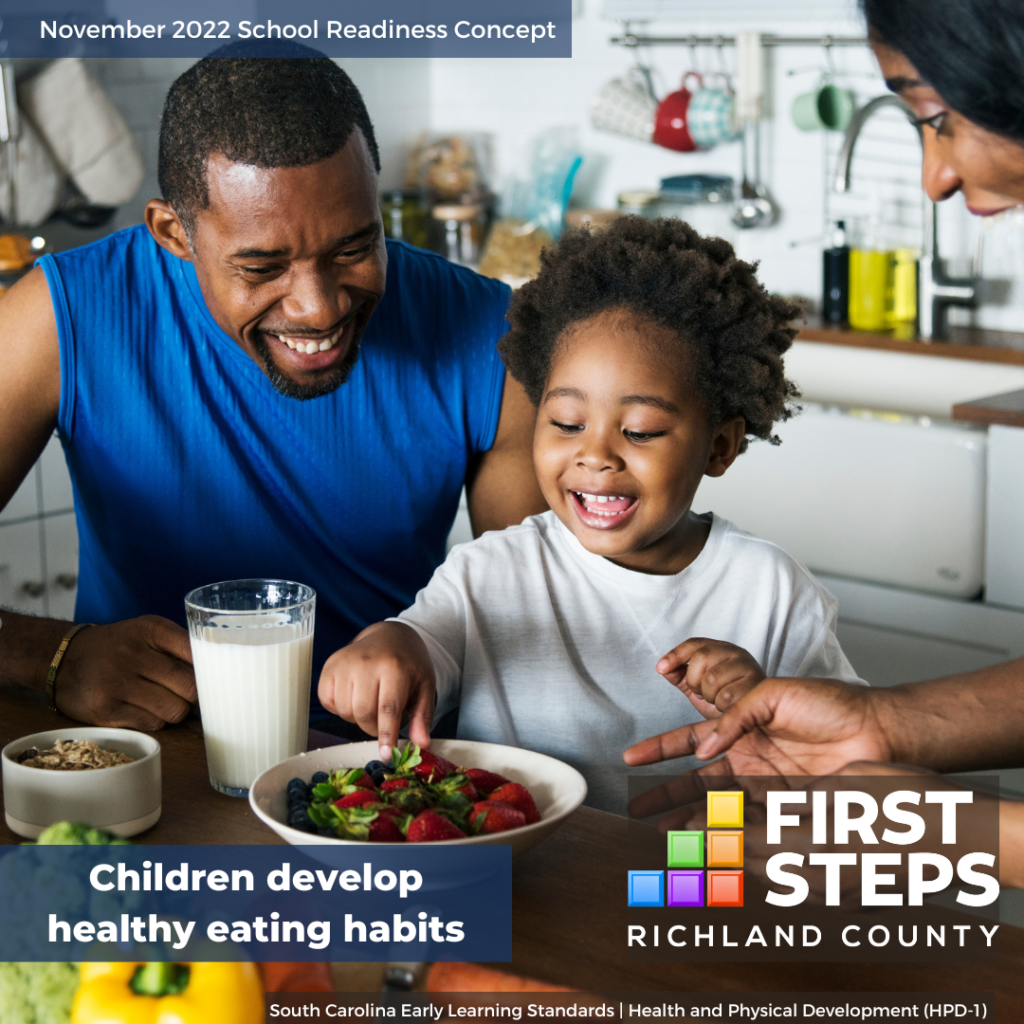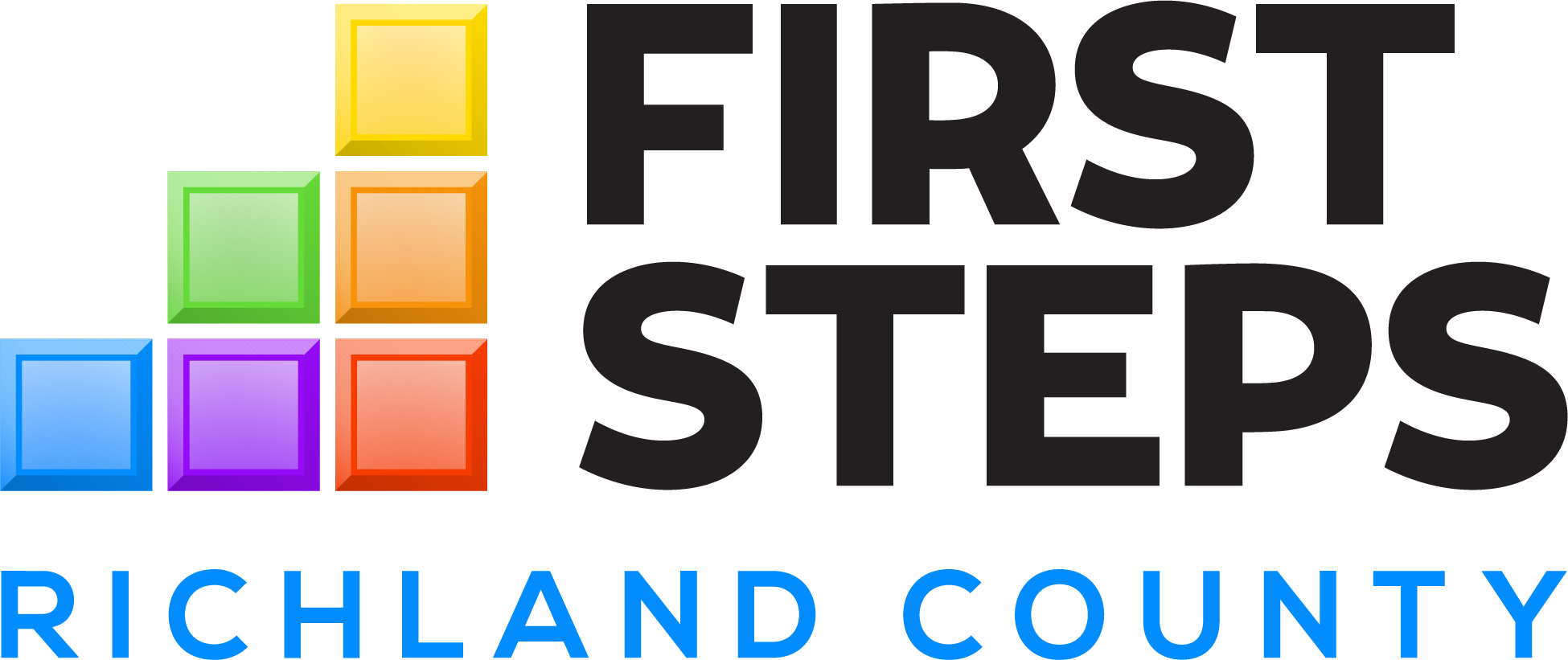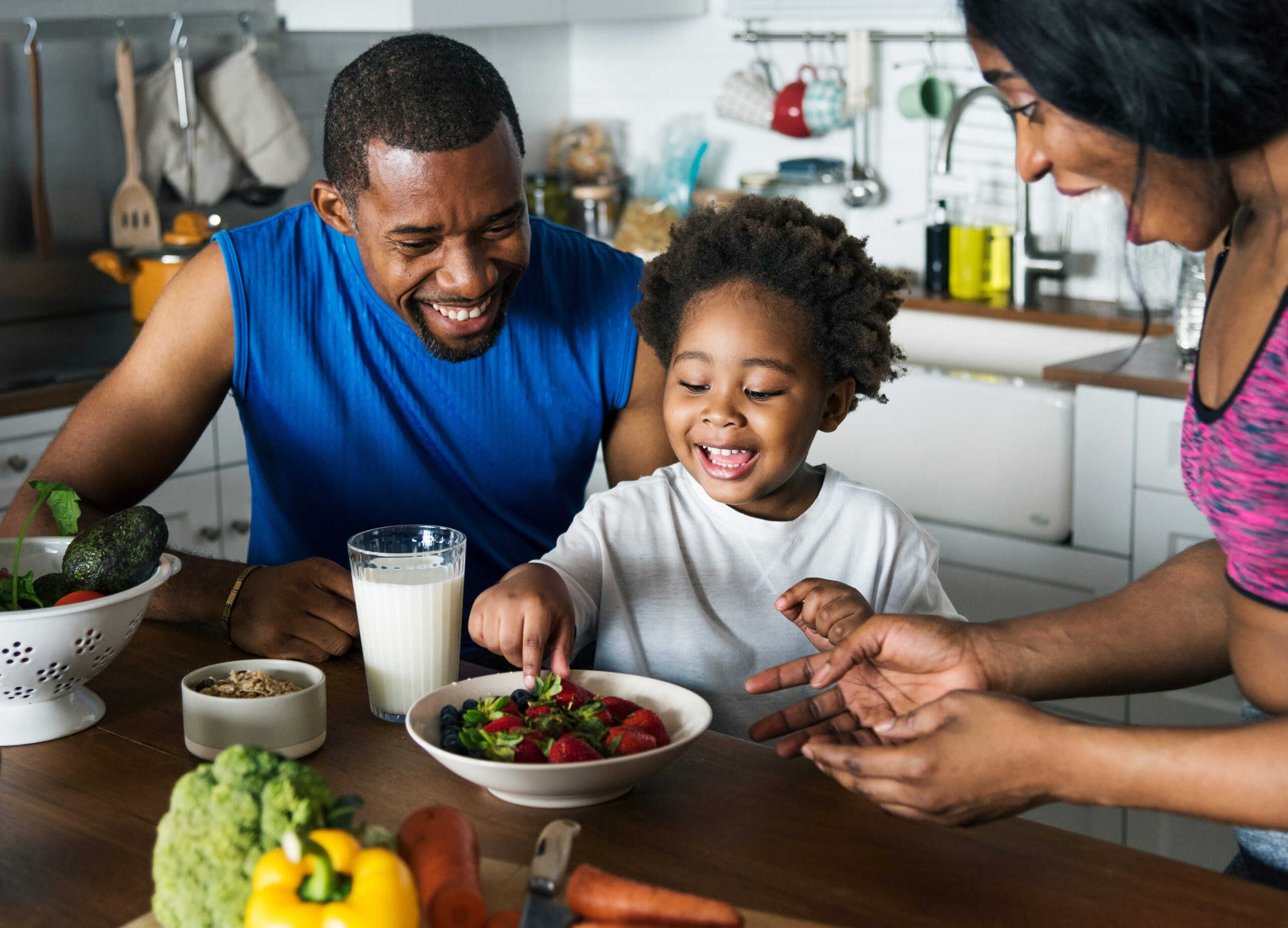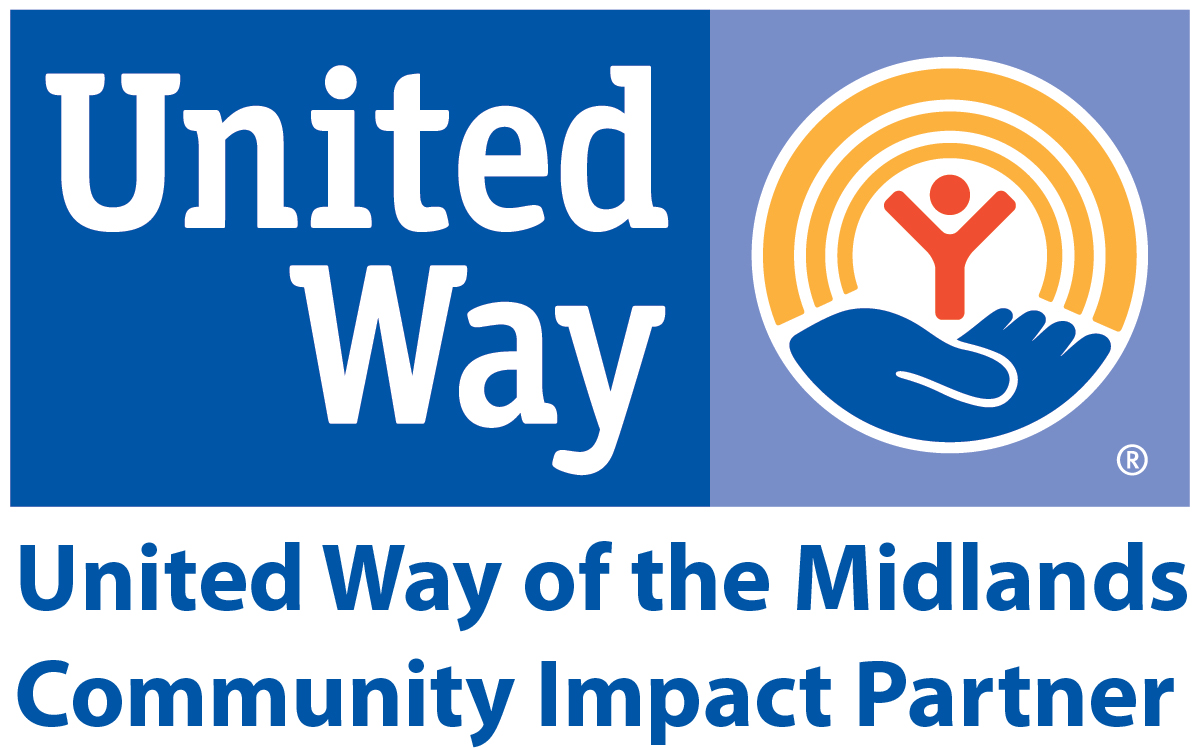
Each month, Richland First Steps selects one school readiness goal from the SC Early Learning Standards (SCELS) to spotlight throughout our programs for children, families, and child care providers.
This month’s concept comes from the Health and Physical Development domain of the SCELS. Like all of the standards, there are developmental indicators that show a child’s progress on this goal at each stage:
Infants (Birth to 12 months)
- Show interest in feeding routines.
- Help with feeding themselves (eat finger foods, hold bottle).
- Show hunger or fullness using actions, sounds, or words (cry or search for food, turn away when full).
- Indicate foods they do and do not like.
- Respond to different textures of food in their mouth (wait for the next bite, spit out food, turn head away).
- Eat different kinds of food such as liquids, pureed, or soft foods, and finely chopped food.
Younger Toddlers (8 to 21 months)
- Try new foods.
- Feed themselves with some assistance (may use hands, spoons, or cups with or without lids).
- Ask for or accept food when hungry.
- Eat enough to meet nutritional needs, even when the amount or type of food varies over time (eat a lot at one meal and a little at the next, show interest in many foods but no interest in others).
- Eat a variety of small pieces of age-appropriate table foods.
Older Toddlers (18 to 36 months)
- Try new foods.
- Feed themselves using utensils and hands.
- Eat foods depending on their appetite and personal preference (make food choices at a meal, leave unwanted food on plate, ask for seconds of favorite food).
- Notice and talk about food preferences, textures, temperatures, and tastes (crunchy crackers, warm soup, sweet apples).
Younger Preschoolers (36 to 48 months)
- Try new foods.
- Feed themselves independently with utensils
- Communicate that some foods are good for them (fruits, vegetables, milk) and some are not healthy (potato chips, soda).
Older Preschoolers (48 to 60+ months)
- Try new foods.
- Feed themselves independently with utensils.
- Given a selection of familiar foods, identify which foods are nutritious and which are not.
- Talk about variety and amount of foods needed to be healthy (can identify what is missing from their meal).
- Name foods and beverages that help to build healthy bodies.
Learn more:


